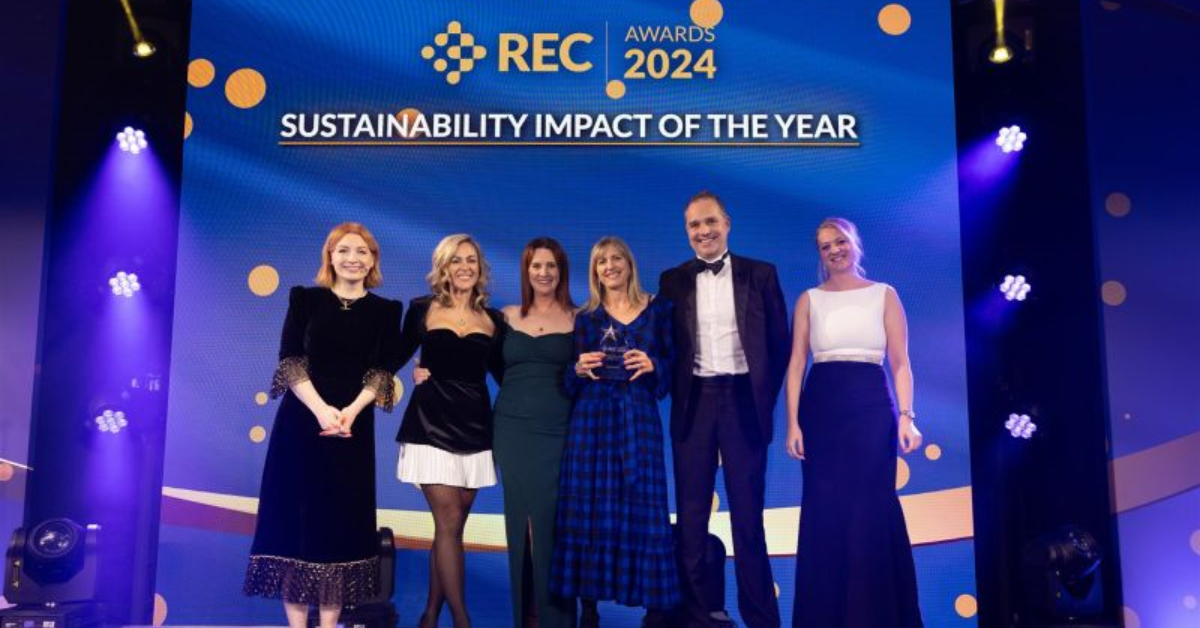How to get your carbon reduction journey started
Many businesses are facing increasing pressure to reduce their carbon footprints. But for the Defence supply chain, these challenges can be particularly daunting.
Many businesses are facing increasing pressure to reduce their carbon footprints. But for the Defence supply chain, these challenges can be particularly daunting.

We recently sat down with Lucy Pope, Head of ESG at Matchtech, to discuss her experience navigating carbon reduction efforts and the tools that have helped along the way.
Find out what Lucy wishes she’d known sooner, plus get valuable insights to fast track your business’ progress.
Q: Lucy, what are the challenges suppliers face today when it comes to carbon reduction?
A: Firstly, I empathise with other suppliers. Sustainability terminology alone can be daunting – and that’s before you start collecting emissions data and taking all the required actions!
One of the key issues is the relative size, maturity, and knowledge levels of the Defence supply chain vs the buying organisations they serve.
While buyers have far more complex carbon footprints, they also have many more resources.
Having a standardised approach across the Defence and Aerospace industry, would improve efficiency and save time. Data submission can also feel one-sided, benefiting clients but not offering suppliers with any actionable insights.
Q: How can suppliers get started?
A: Invest time in learning: If you haven’t got the budget for consultancy there are so many free resources available online.
We wholeheartedly support customers requests for emissions data. However, we had to invest a lot of time in completing similar but different requests, which can mean more time is spent reporting than taking action.
Take every possible opportunity to learn from larger organisations, reach out and ask questions to your customers and to JOSCAR.
Lucy Pope, Head of ESG, Matchtech

When we were starting out, I was concerned this made us look naive, but now I realise everyone is on a journey. By speaking to more mature organisations we picked up many hints and tips.
Get stakeholder buy-in: It’s broadly acknowledged that ESG shouldn’t sit in isolation. To get carbon reduction initiatives implemented, you need stakeholder engagement across all levels.
Start measuring: As a professional service provider, initially it felt challenging for Matchtech to identify emissions reduction strategies.
When the path ahead isn’t clear, focus efforts on getting emissions measurements. You don’t have to nail these in one go, capturing some information is a start. And be sure to keep organised and systematic with how you store your data.
As you progress you can improve the accuracy of your data. The more precise your data is, the better insights you’ll get into potential opportunities for reduction.
But what you’ve got to remember is, even if you're not taking action right away, dedicating your energy to accurate measurement will pay off in the long run. It provides ongoing benefits, as you track progress over time.
There are things you can do, even if you have no (or a really small) budget.
Q: What are some of the key actions suppliers can take to reduce the footprint of their Greenhouse Gas Emissions (GHG)?

A: Firstly, I’d like to highlight there are things you can do, even if you have no (or a really small) budget. A lot of actions are ultimately aligned to cost saving anyway.
For Matchtech, switching to renewable energy was a great first step, and it made a significant impact on our carbon footprint.
But focusing on renewable energy alone is not enough, you need to address Scope 3 emissions. This involved embedding better practices into existing processes and policies, particularly around purchasing and supply chain management. We also chose to focus on business travel and employee commuting.
By identifying areas where we could have the most impact, we were able to engage key stakeholders across the business and implement practices that could be sustained for years to come.
Q: What has your experience with JOSCAR Zero been like?
A: JOSCAR Zero makes reporting easier and shows you exactly how to reduce your emissions impact.
It accommodates all levels of organisational maturity and knowledge around carbon reporting.
Firstly, if you're not currently measuring emissions, the results page is invaluable. It gives you visibility of your emissions in a really accessible way.
On the other hand, if you're already capturing emissions data, the results page helps identify areas to improve measurement accuracy. This is particularly useful if you don’t have third-party verification, which many small to medium-sized businesses don’t.
The JOSCAR Zero action plan provides a clear, tailored pathway for your organisation.
The platform is user-friendly, easy to read, and simple to interpret. For businesses at the start of their journey, there are even clear, accessible descriptions that explain terminology and metrics, which is really helpful.
Another thing I’d highlight is how smooth and well-managed the entire process felt. A big thank you to Izzy Knight, Service Delivery Manager at Hellios, who delivered training which gave us a clear understanding of the purpose, key goals, and practical steps required to complete our data.
The ability to ask questions throughout, to a dedicated Hellios contact made the process quicker and more informative than our experience with some other data capture systems.
Conclusion
Lucy’s insights provide a clear look at the challenges and opportunities suppliers face in the transition to a low-carbon economy.
By investing time and resources in accurate emissions measurement, embracing tools like JOSCAR Zero, and taking deliberate actions, significant strides can be made.
By sharing knowledge, tools and getting support, suppliers can drive meaningful change and meet the needs of their customers at the same time
Want to dive deeper?
Watch our on-demand webinar, featuring Lucy alongside buyers from BAE Systems, Roke, Atlas Elektronik and Babcock Interational for further insights which will help set your business apart.

